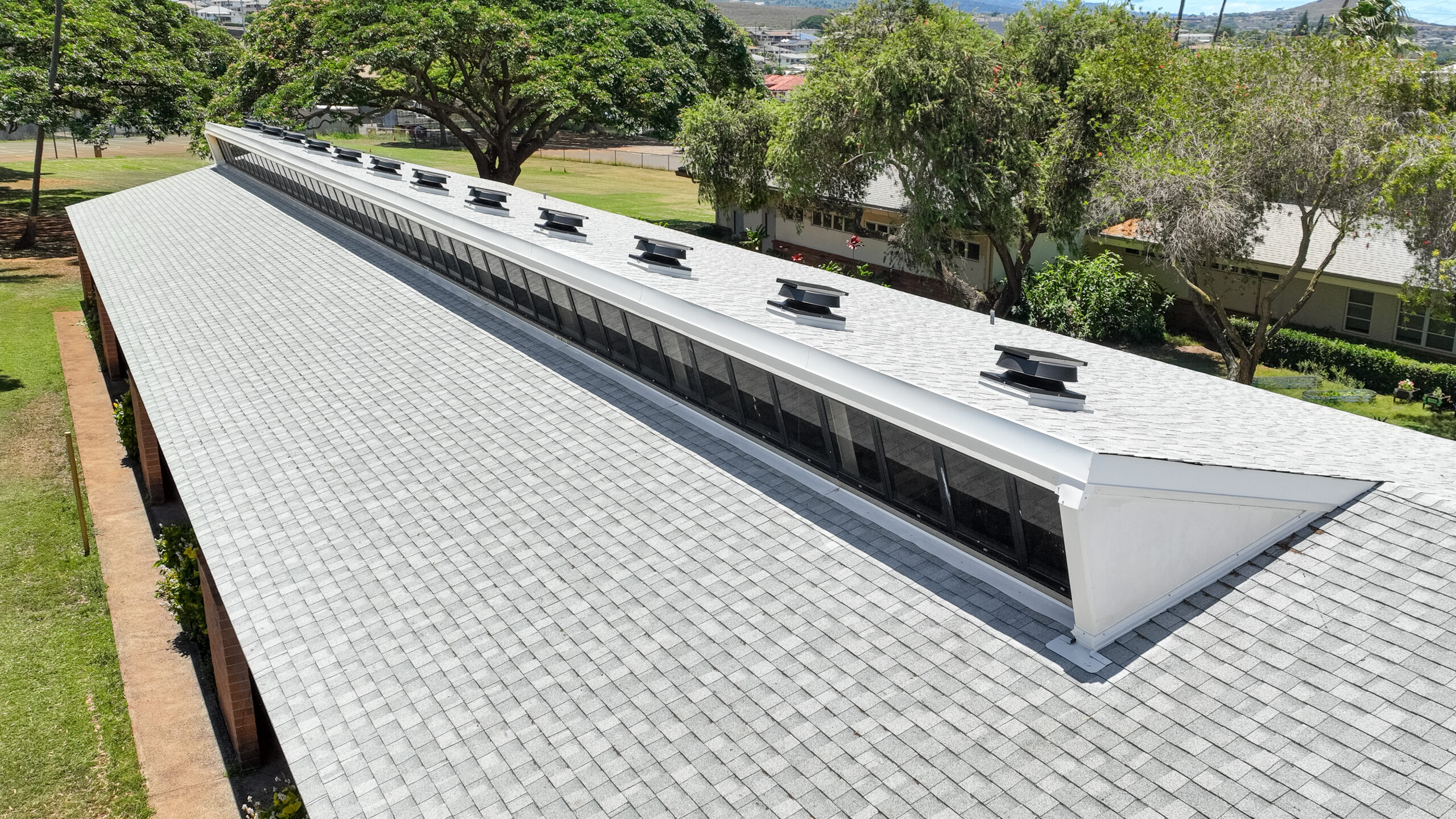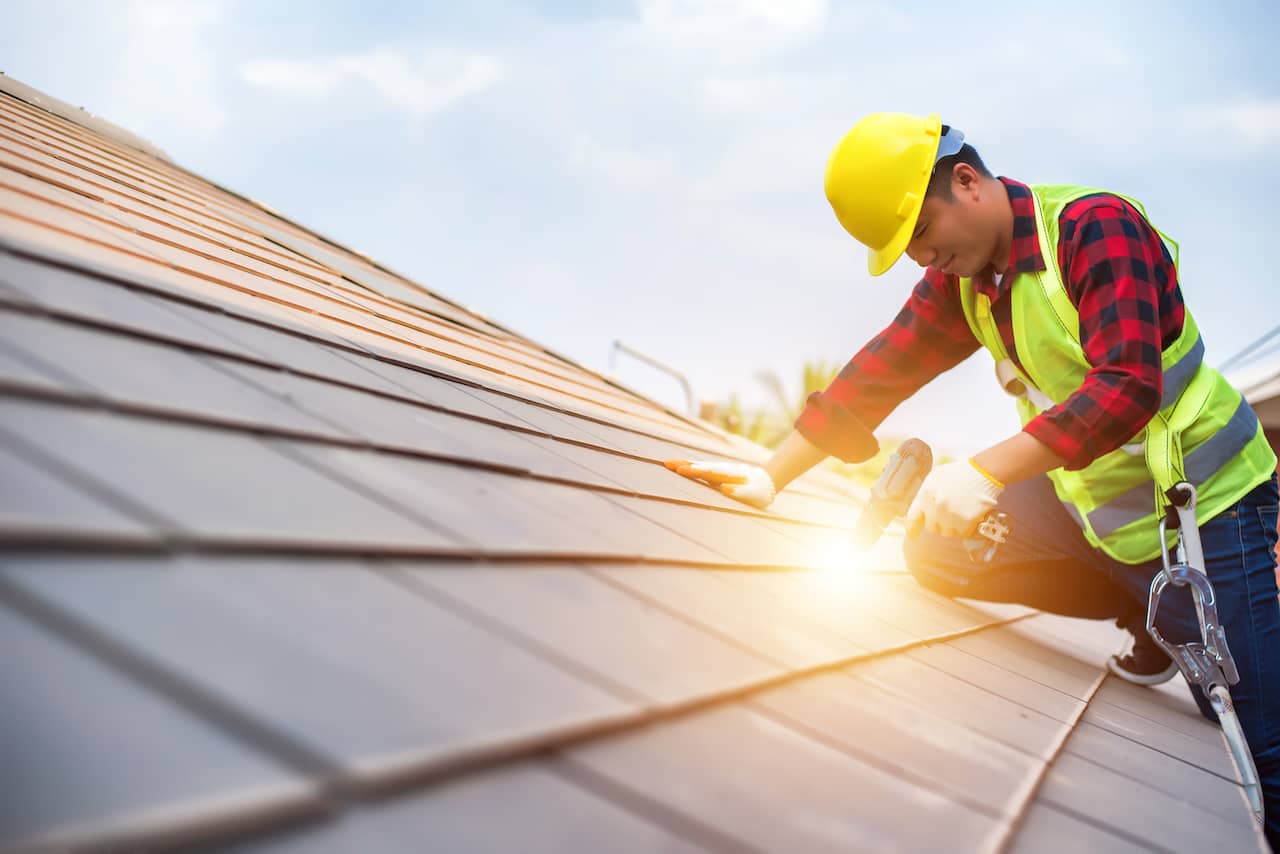Reveal Typical Roof Troubles and Just How to Address Them Efficiently
When it pertains to your roof, identifying issues early can conserve you money and time. You may observe water discolorations on your ceiling or fractured tiles during your regular checks. Neglecting these indicators can lead to bigger concerns down the line. Understanding how to determine and resolve these typical roof problems is essential for maintaining your home's honesty. What specific steps should you take to guarantee your roof covering remains in leading problem?
Recognizing Roof Covering Leaks and Their Reasons

Next, examine your roofing system from the outside. Look for missing or cracked tiles, rusted blinking, or harmed seamless gutters.
During heavy rainfall, observe your roofing system for any type of merging water or drips. This can reveal leakages that may not be noticeable during completely dry problems. By remaining alert and regularly checking your roof covering, you can catch leakages early and protect your home from additional damages.
Managing Missing or Harmed Roof Shingles
When you see missing or damaged shingles, it's necessary to act quickly to avoid further concerns. You'll wish to identify the degree of the damages, repair any kind of missing out on tiles, and take into consideration precautionary upkeep pointers to maintain your roofing system in top shape. Taking these steps can save you time and money in the future.
Determining Roof Shingles Damage
Although tiles are created to endure the components, they can still endure damage over time, leading to possible leaks and expensive repair work. To determine roof shingles damages, begin by examining your roofing for missing out on, cracked, or crinkled roof shingles. On a regular basis monitoring your roofing, especially after extreme weather condition, can aid you capture issues early and keep the stability of your home.
Repairing Missing Out On Tiles
After detecting shingle damage, the following step is addressing any kind of missing out on or damaged tiles promptly to avoid additional concerns. Begin by evaluating the affected area and figuring out the amount of shingles need replacement. If you can, climb up onto your roofing safely, putting on ideal gear. Remove any type of damaged shingles carefully using a pry bar. Once you've cleared the location, slide in the new shingles, ensuring they align with the existing ones. Secure them with roof nails and use roof covering adhesive for included security. Do not forget to seal the edges to avoid water infiltration. If you're uneasy with the repair, it's smart to call a specialist. Taking activity swiftly will aid preserve your roof's stability and extend its life-span.
Preventive Upkeep Tips
How can you maintain your roofing in top shape and protect against shingles from going missing or obtaining damaged? Normal examinations are key. Inspect your roof at the very least two times a year and after severe weather. Search for indicators of wear, such as curling, splitting, or loosened tiles.
Keep seamless gutters clean and cost-free of debris to ensure proper water flow and avoid shingle damage. Trim overhanging branches to minimize the danger of them scuffing against your roofing system during tornados.
Consider applying a protective sealant to extend your shingles' life-span. If you notice any kind of problems, resolve them without delay to stay clear of expensive fixings later on. Taking these safety nets can save you time and cash while guaranteeing your roof stays sturdy and reputable.
Comprehending Roof Ventilation Issues
Proper roof covering ventilation is vital for maintaining the longevity and efficiency of your roof covering system, as it helps control temperature and moisture levels in your attic. Without adequate air flow, you could face problems like too much warm build-up, resulting in premature tile deterioration, or increased moisture that can create mold and mildew growth and wood rot.
To evaluate your roofing system air flow, check for signs of overheating, such as deformed roof shingles or a hot attic room. Look for blocked vents, which can restrict airflow and catch heat. You must assure your consumption and exhaust vents are useful content balanced, permitting for appropriate air exchange.
Attending to these concerns promptly can protect your roof and conserve you from pricey fixings down the line. Stay aggressive in preserving your roof covering's air flow to secure your home.
Dealing With Roofing System Moss and Algae Development
While you could appreciate the all-natural appearance of moss and algae on your roof covering, these microorganisms can result in substantial problems if left untreated. They catch dampness, which can result in tile deterioration and leaks. To tackle this issue, start by removing any kind of visible growth. Make use of a soft-bristle brush to gently scrub away the moss and algae, bewaring not to harm your shingles.
Next, think about applying a specialized roofing cleaner or a combination of water and bleach to kill continuing to be spores. Rinse completely to avoid any type of chemical damage. Additionally, install zinc or copper strips along the ridge of your roof covering. As rain cleans over these metals, it produces a protective obstacle versus future development. Regular evaluations and upkeep will certainly help avoid moss and algae from returning, guaranteeing your roof covering continues to be in good shape for years to come.
Repairing Storm Damages and Wind Issues
After a tornado, it's important to assess your roofing for damage triggered by high winds and heavy rain. Begin by looking for missing out on or broken tiles, as these are typical casualties. If you discover any kind of, it is necessary to change them quickly to prevent leaks. Next, evaluate the flashing around smokeshafts and vents; damaged blinking can cause water infiltration.
Seek any sagging locations, which could suggest water build-up or architectural problems. If you discover any debris, like branches or leaves, remove them carefully to stay clear of more damages. If your rain gutters are obstructed, clear them to ensure correct water drainage.

For small repairs, you may handle it yourself, yet don't think twice to call a professional for extensive damage. Remember, acting quickly can save you from larger issues down the line, so take that evaluation seriously and resolve any type of problems asap.
Identifying Indications of Architectural Damages
How can you tell if your browse around this site roof covering is enduring from architectural damage? Next, check for fractures or voids in the walls or ceiling, as these can signal shifting or resolving due to roofing system concerns. If you notice missing or damaged tiles, it's essential to resolve them quickly, as they can subject your roofing to further damages.
Routine Upkeep Tips for Longevity

Regular Examinations Significance
Since a roofing is your home's initial line of protection versus the aspects, routine inspections are crucial for maintaining its honesty (roofing materials hawaii). You ought to inspect your roof covering at least twice a year, ideally in spring and autumn, to catch potential concerns early. Try to find missing or harmed tiles, indicators of leakages, and any particles that might create troubles. Pay very close attention to locations around chimneys, vents, and flashing, as these prevail vulnerable points. If you observe anything unusual, don't think twice to get in touch with a professional for a comprehensive analysis. Staying on top of these examinations can avoid costly repair work down the line and prolong your roof covering's life-span, ensuring your home continues to be safe for several years to find.
Appropriate Gutter Maintenance
Regular roofing system evaluations naturally bring about the value of proper rain gutter maintenance. Tidy your seamless gutters at the very least two times a year to avoid blockages from fallen leaves, dirt, and particles. If you live in a tree-heavy area, take into consideration examining them regularly. Use a sturdy ladder and use gloves while getting rid of the buildup. Examine your gutters for leakages or rust; they can cause water damages to your roofing system and home. Ensure downspouts straight water far from your foundation to stay clear of flooding. Installing gutter guards can reduce debris buildup and minimize upkeep time. Lastly, look for correct slope; seamless gutters should slope toward the downspouts to assure perfect water drainage. By complying with these suggestions, you'll extend your gutters' lifespan and shield your roofing.
Regularly Asked Questions
Exactly How Can I Select the Right Roof Covering Material for My Home?
To pick the appropriate roof material for your home, take into consideration climate, sturdiness, and appearances. Study options like asphalt shingles, metal, or floor tile. Consider upkeep needs and spending plan to locate what fits you finest.
What Are the Signs I Required a Roofing Substitute As Opposed To Fixing?
If you discover extensive leakages, drooping, or missing out on tiles, you could require a roofing replacement. If your roof's nearing its life-span or has considerable damages, it's time to contemplate a complete substitute instead of simply fixings.
Just how Frequently Should I Arrange Expert Roof Covering Evaluations?
You should schedule specialist roofing system examinations at the very least once a year, ideally in springtime or loss. This helps catch prospective concerns early, guaranteeing your roof stays in excellent problem and prolonging its life-span.
Can I Install a New Roofing System Over My Old One?
You can install a new roof covering over your old one, yet it's vital to inspect regional structure codes and a fantastic read guarantee the existing roofing's problem is sound. This technique can save money and time, but think about prospective difficulties.
What Is the Typical Life-span of Different Roofing Materials?
The average life-span varies by material: asphalt shingles last 15-30 years, metal roofing systems can last 40-70 years, while floor tile or slate roofing systems might go beyond half a century. Choose intelligently based on your climate and budget plan.
Conclusion
By staying vigilant and addressing usual roofing troubles promptly, you can protect your home and expand your roof covering's life expectancy. On a regular basis examine for leakages, damaged shingles, and air flow issues, and take on moss or algae growth before it worsens - roofing materials hawaii. After tornados, check for any damage and make needed repairs. With a little regular upkeep, you'll not just guard your investment however likewise take pleasure in tranquility of mind recognizing your roof remains in leading form. Don't wait-- act now!